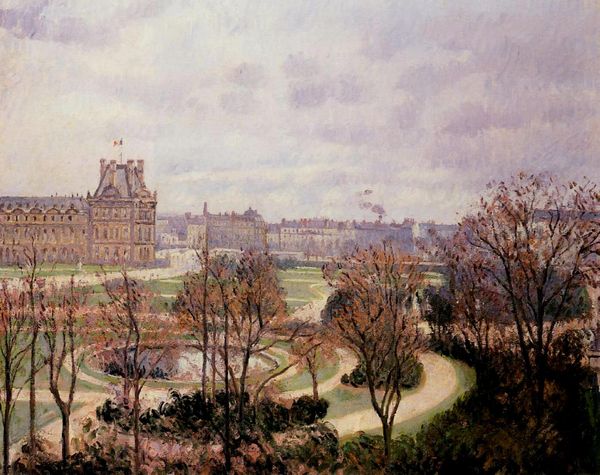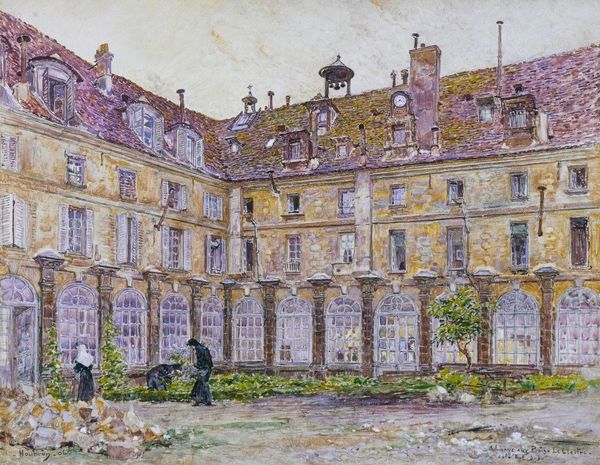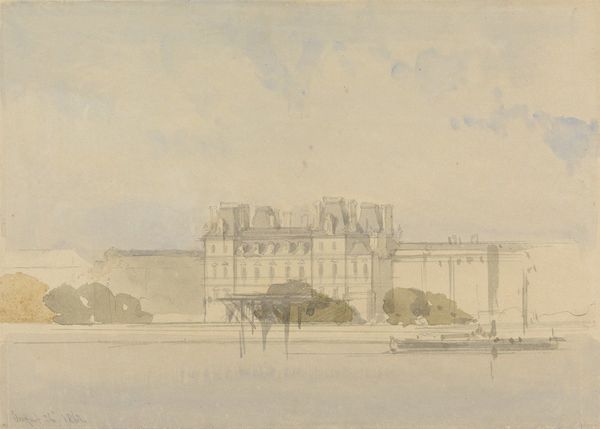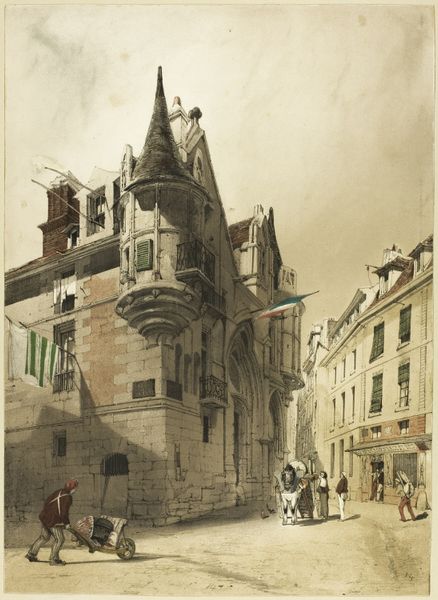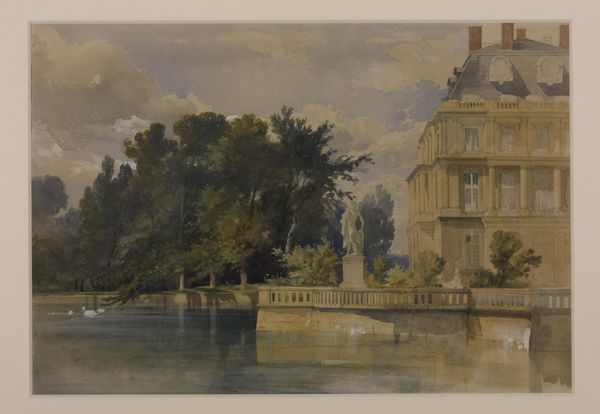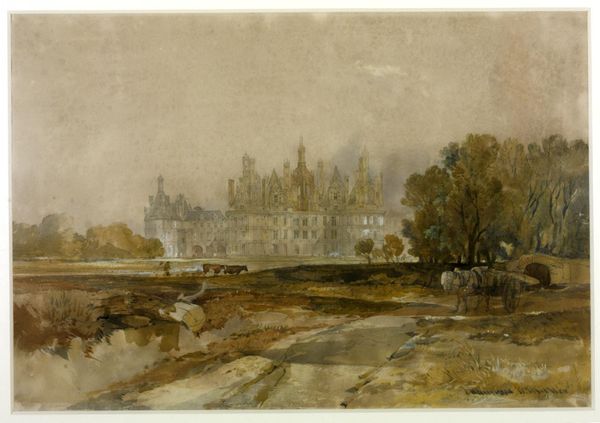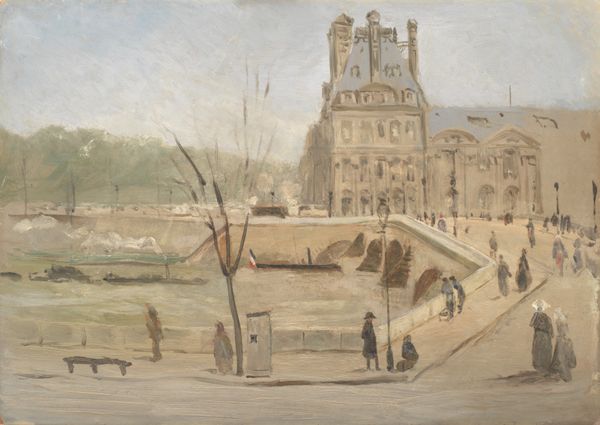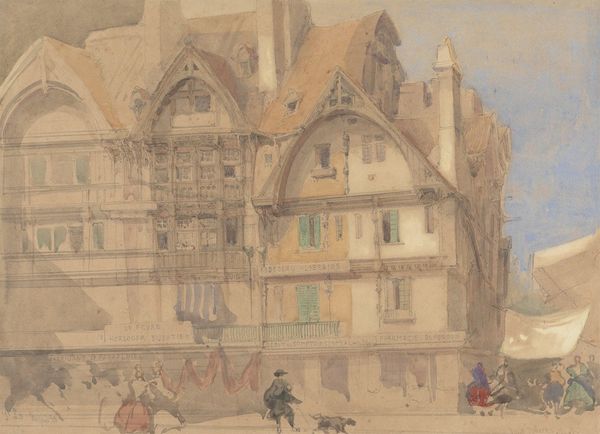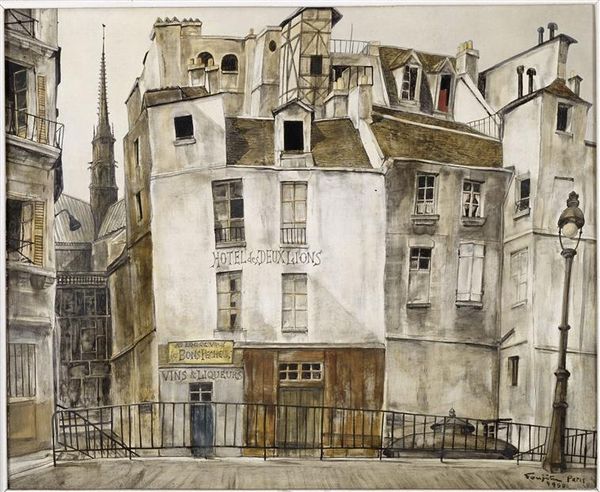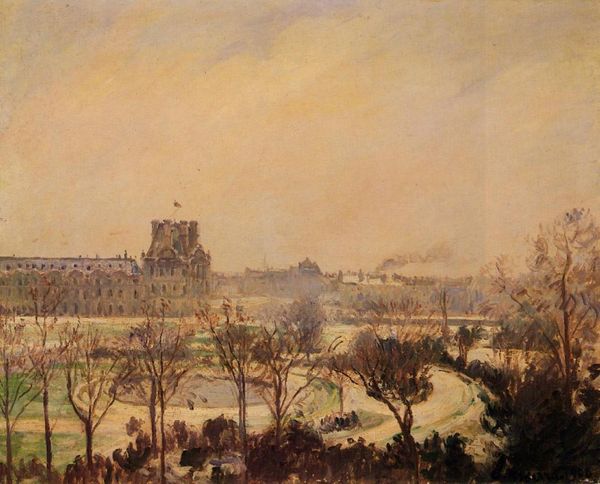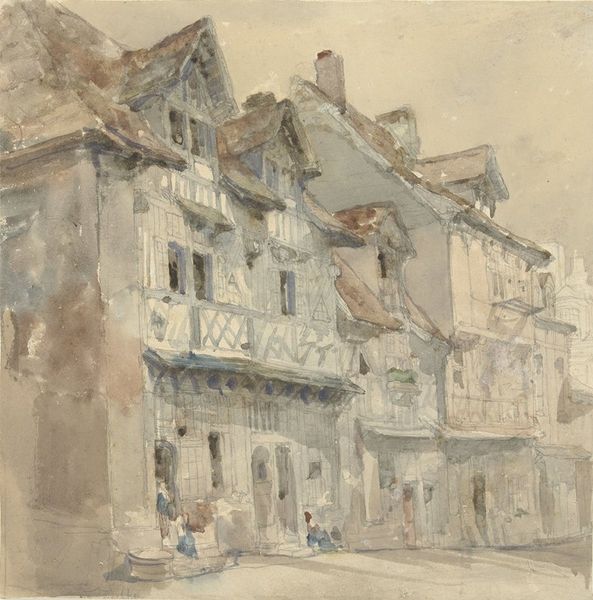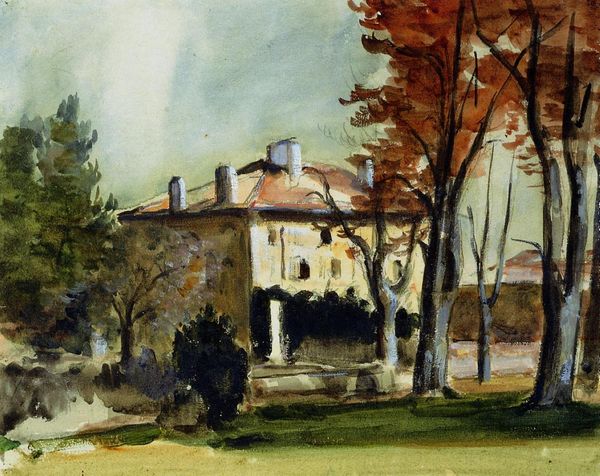
painting, watercolor, architecture
#
painting
#
landscape
#
oil painting
#
watercolor
#
romanticism
#
cityscape
#
watercolor
#
architecture
Copyright: Public domain
David Cox painted this watercolor of the Pavillon de Flore, Tuileries, in Paris in the 19th century. The Tuileries Palace, begun in the 16th century, stood as a symbol of French royalty and power, right up until its destruction in 1883. Cox's choice of subject matter reflects a broader interest in the monuments of European power. Here, the Pavillon de Flore is depicted with loose brushstrokes and atmospheric effects typical of English watercolor painting. The architecture itself, with its grand scale and classical detailing, conveys a sense of authority and permanence. But Cox made this painting in the wake of the French Revolution, and the era of Napoleon, after which the restored monarchy was struggling to regain its former prestige. We might consider his painting as a conservative one, as he presents the building as a monument for the ages. To fully understand Cox’s painting, we might investigate guidebooks and popular press publications of the time. These will provide a richer understanding of the Pavillon de Flore's meaning as a cultural and political symbol.
Comments
No comments
Be the first to comment and join the conversation on the ultimate creative platform.
